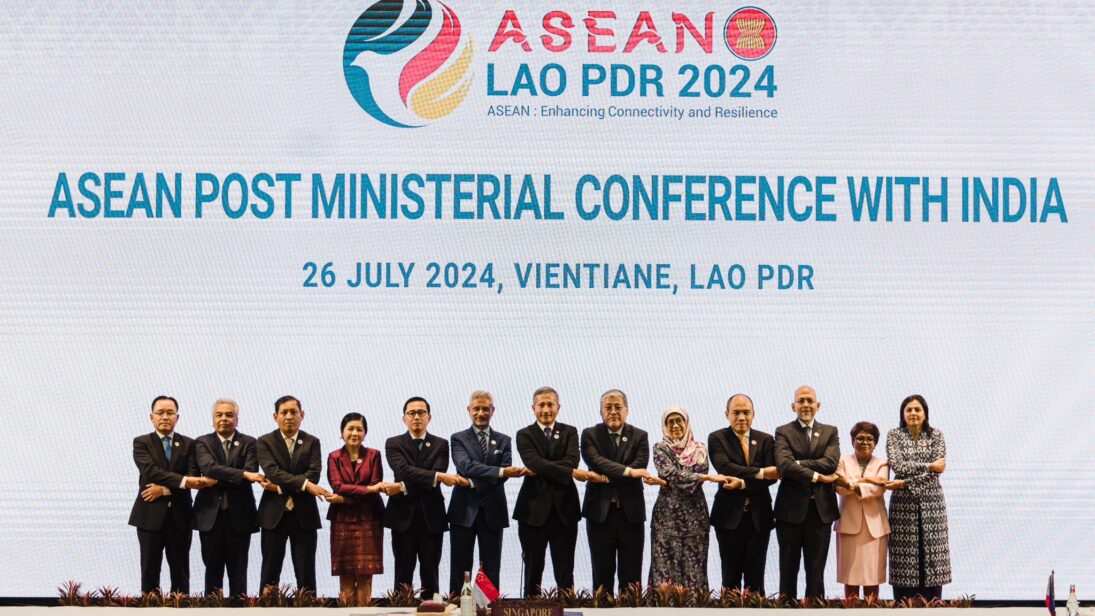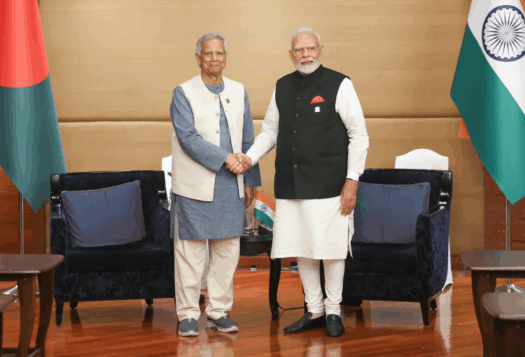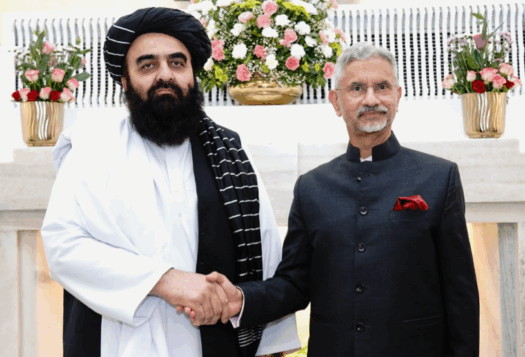
The 2025 edition of the State of Southeast Asia Survey Report, published by the ISEAS–Yusof Ishak Institute, highlights India’s growing strategic importance in the region. Drawing on the responses of Southeast Asian opinion leaders—including policymakers, academics, business professionals, civil society members, and media representatives—the report ranks the Association of Southeast Asian Nations’ (ASEAN) eleven dialogue partners in order of their perceived strategic relevance. This year, India rose to sixth place, up from ninth in 2024.
Although India has increased its strategic relevance in the region compared to last year, a closer examination of the report reveals that much of this gain stems from strengthened ties with just three countries—Brunei, Cambodia, and Laos. Prime Minister Narendra Modi visited two of them last year, with the trip to Brunei marking the first-ever visit by an Indian prime minister. However, India’s economic and security engagement with Southeast Asia remains limited, marked by stagnant trade, delayed connectivity projects, and cautious defense cooperation. While recent shifts, such as naval exercises and arms sales, signal growing involvement, structural and strategic constraints continue to hamper deeper integration.
Limited Economic Engagement
In the past decade, India’s portion of ASEAN’s total trade has stagnated at 2-3 percent, well behind China (19.7 percent), the United States (11.2 percent), the European Union (10 percent), and Japan (6.8 percent). Although the ASEAN-India Trade in Goods Agreement (AITIGA) was intended to boost Indian exports to Southeast Asia, it has instead widened India’s trade deficit with the region. A key factor behind this imbalance is India’s comparatively higher statutory tariffs in sectors such as agriculture, which induce ASEAN states to reciprocally eliminate fewer tariffs for industrial products where Indian exporters are relatively competitive. There are also tariff asymmetries under AITIGA, whereby even when India has liberalized tariff lines, some ASEAN members have not reciprocated adequately.
India’s economic and security engagement with Southeast Asia remains limited, marked by stagnant trade, delayed connectivity projects, and cautious defense cooperation.
India’s deliberate distancing from China-centric supply chains has significantly shaped its economic engagement with Southeast Asian countries. India’s withdrawal from the Regional Comprehensive Economic Partnership and its opposition to ASEAN’s inclusion in the Supply Chain Resilience Initiative (SCRI) involving India, Japan, and Australia underscores this strategic stance. This skepticism toward integration with ASEAN stems from a concern in New Delhi that ASEAN’s supply chain integration with Beijing will allow Chinese exporters to reroute their products through Southeast Asian countries, thereby affecting India’s manufacturing sector. Of the 43 anti-dumping cases registered by India’s Directorate General of Trade Remedies in 2024, as many as 34 involve China, either solo or in consort with other countries.
Physical and digital connectivity between India and Southeast Asia has also yet to yield substantial results. The India-Myanmar-Thailand Trilateral highway project and the Kaladan Multi-modal Transit Transport project have been impeded by several hurdles, such as the security concerns and ethnic tensions in both India and Myanmar and more recently, the COVID-19 pandemic. Additional hurdles stem from the structural challenges in implementing India’s Lines of Credit (LoCs). Often, LoC announcements are made without adequate budget provisions, leading to issues in coordinating funding and supervision between the Ministry of Finance, the Ministry of External Affairs, and other implementing agencies in New Delhi. In 2015, India offered a USD $1 billion LoC to ASEAN countries to support digital connectivity projects, but only Laos ultimately submitted a formal proposal due to disagreements over credit line rules and terms. Further issues arose due to procedural complications, including the absence of a telecom consultant at India’s Export-Import Bank, which was necessary for project appraisal and execution.
Short-sighted Strategic Vision: Weak Security Cooperation
Due to India’s heavy focus on securing its littoral waters, its security engagement in Southeast Asia was long confined to the Bay of Bengal littoral states—Myanmar, Thailand, and Indonesia—with a focus primarily on non-traditional security threats. For years, India avoided substantial naval cooperation with South China Sea (SCS) claimant states, viewing China’s military dominance in the region as a reason to stay out of ongoing disputes. This caution was evident in 2012, when Vietnam asked India to support its position in the South China Sea during an India-ASEAN summit. India declined, and the final joint statement made only a brief mention of freedom of navigation without any reference to the SCS.

However, following the deterioration of its border relationship with China, India began to shed its reluctance. It has since conducted bilateral naval exercises with Vietnam and the Philippines in the SCS, as well as multilateral exercises with ASEAN countries alongside partners like the United States and Japan. Still, these exercises remain ad hoc and lack the institutionalization seen in India’s coordinated patrols with Thailand, Indonesia, and Myanmar. Additionally, a renewed thaw in India-China relations could again temper India’s naval activity in the SCS.
Of late, India has stepped up its arms sales to Southeast Asia with several high-profile weapons sales, such as Brahmos missiles to the Philippines, the INS Kirpan to Vietnam, and INS Sindhuvir to Myanmar. Yet, barring Myanmar, India is not a major weapons supplier to any Southeast Asian states because of its as yet relatively less advanced domestic defense industrial complex and its weak ties with local defense companies hindering its ability strike industrial partnerships.
Looking forward, India should move beyond ad hoc naval exercises and institutionalize regular maritime drills in the South China Sea, especially with Vietnam and the Philippines — two countries with which it has developed deeper defense ties.
The Way Forward
India’s limited influence in Southeast Asia can be attributed to inconsistent engagement and persistent policy hurdles. While it has outlined promising initiatives to build a sustainable relationship with the region—such as the Act East Policy, the Security and Growth for All in the Region (SAGAR) vision (now upgraded to MAHASAGAR), and the Indo-Pacific Oceans Initiative— these frameworks require stronger, sustained engagement and more effective implementation to translate into meaningful regional influence.
Looking forward, India should move beyond ad hoc naval exercises and institutionalize regular maritime drills in the South China Sea, especially with Vietnam and the Philippines — two countries with which it has developed deeper defense ties. Participating in multilateral maritime cooperative activities, such as those led by the Philippines alongside partners like the United States, Japan, and Australia, would further signal India’s commitment to regional security and its support for a rules-based order in the SCS. Additionally, India should prioritize long-term capacity-building efforts across Southeast Asia, such as through training, maritime domain awareness assistance, and provisions of surveillance and patrolling assets for states to monitor their EEZs. This would not only help regional states address China’s assertiveness, but also strengthen their ability to manage non-traditional security threats like piracy, natural disasters, and human trafficking. These steps would reinforce India’s image as a reliable development and security partner and bolster its strategic credibility in the region.
Also Read: India and Vietnam Can Do More to Leverage Their Complementarities
Views expressed are the author’s own and do not necessarily reflect the positions of South Asian Voices, the Stimson Center, or our supporters.
***
Image 1: Dr. S. Jaishankar via X
Image 2: Indian Ministry of Defence


